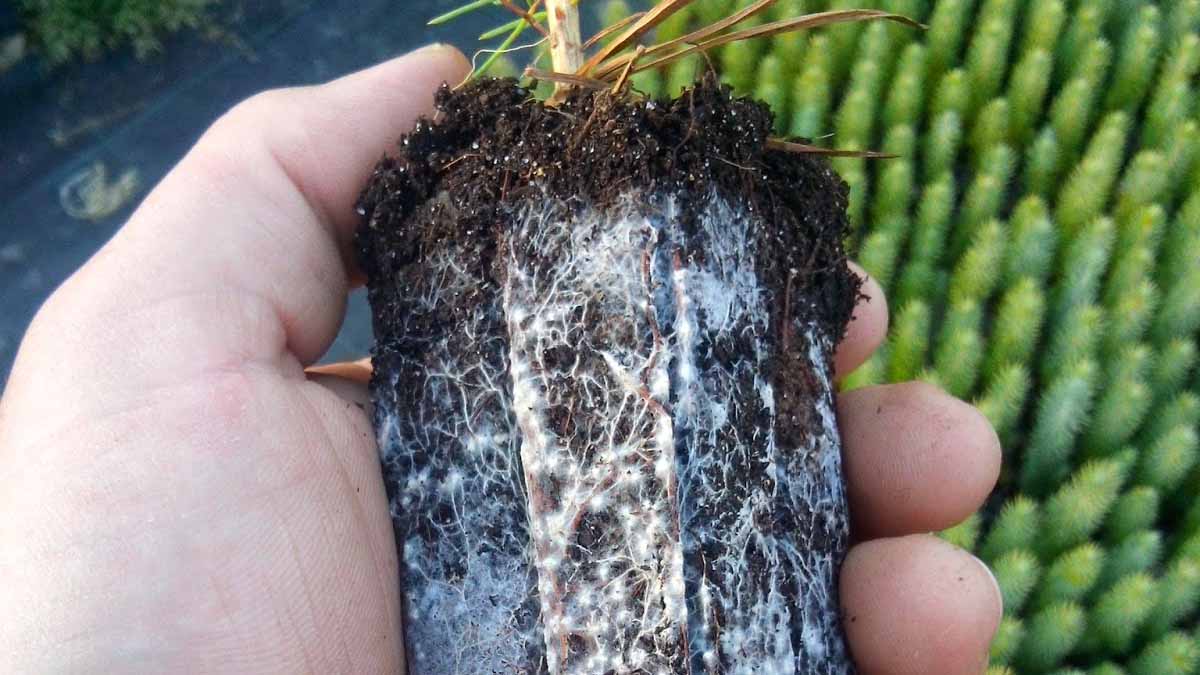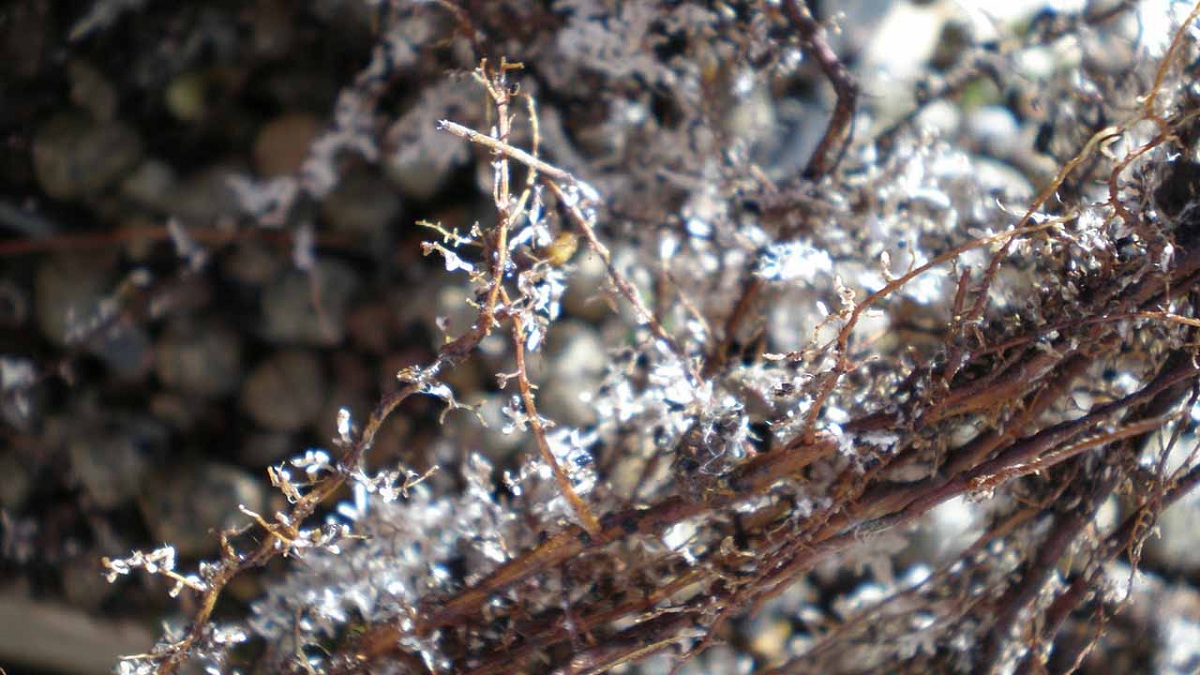
In the field of biology, the relationships between living beings are studied. Today we are going to talk about mycorrhiza. It is a type of symbiotic relationship that takes place between the roots of some plants and some non-pathogenic fungi for them. It means that both organisms or have a type of benefit with this relationship. The term derives from the Greek words mykos and rhiza, which mean "mushroom" and "root" respectively.
In this article we are going to tell you everything you need to know about mycorrhizae and its importance.
Key features

There are different types of relationships of living beings but mycorrhizae have been established between the roots of some plants with fungi that are not serious for them. Two types of symbiotic relationships have been described between fungi and plant organisms: lichens and mycorrhizae. Lichens normally consist of the permanent interaction between an alga and a fungus. These two organisms mutually benefit from this relationship based on survival. Mycorrhizae correspond to the association between a fungus and the roots of a vascular plant.
Like any relationship that exists an interspecific of symbiosis type, they represent an extremely close interaction and that last over time. In order for them to obtain both benefits it must last long enough. Mycorrhizae are extremely common. Many scientists think that 90% of vascular plant species currently described, both those that are wild, those cultivated by man, they are symbiotically associated with a fungus through the roots.
Whatever the type of mycorrhiza, the result is the same. Plants obtain the benefit of increased mineral absorption and some protection against pathogenic nematodes or fungi. On the other hand, the fungus obtains sugars and organic substances that are nutritious and derived from plant tissue. As you can see, both organisms derive a benefit from the interaction with each other.
Function of mycorrhizae

We are going to see what are the functions that mycorrhizae fulfill in natural ecosystems. We know what very important symbiotic associations are for the two species that are involved. Especially the importance lies in what refers to nutrition. Fungi provide substantial benefits to host plants. And it is that these fungi help the plant's ability to absorb water and mineral nutrients that are essential for its development and growth. Among these essential minerals we find phosphorus, manganese, zinc and copper.
Furthermore, the absorption capacity is much higher than before since the host plant receives protection against the invasion of other fungi that are pathogens. They also receive this protection from nematodes in the soil. They are nothing but round worms. For its part, the host plant provides the fungus with a structural support and food material in the form of vitamins and other processed organic substances. These elaborate organic substances are created through the process of photosynthesis, which fungi cannot make.
The roots of two or more nearby plants can communicate with each other through the hyphae that the fungi associated with them have. This makes the relationship also work by transferring water and nutrients from one plant to another through the fungal highway.
Types of mycorrhizae

From natural ecosystems there are different types of mycorrhizae depending on the types of relationships that exist. There is a lot of types: endomycorrhizae and ectomycorrhizae. The former represent 80% of all vascular plants. Let's see what the characteristics of each of them are:
Endomycorrhizae
It is that type of symbiotic relationship that hyphae of the fungus penetrate the root cells of the plant. Thanks to this penetration of the cells, it is possible to establish a very close contact between both species for the exchange of nutrients and energy. The fungal component of most endomycorrhizae is a fungus of the glomeromycotic type, which belongs to a group of strict symbiont fungi. It is important to mention that these relationships do not become very specific, so it is understood that a fungus can colonize several plants in different ways.
Ectomycorrhizae
This type of symbiont relationship occurs when the hyphae of a fungus surround the root cell, but they do not penetrate the cell wall. This relationship is known as ectomycorrhizal. The fungi that participate in this type of relationship belong to the agaromycot group, although there are also some fungi that belong to the ascomycetes. It is usually common in some trees and shrubs in temperate and tropical climates. The trees where the most amount of ectomycorrhizae are found are oaks, poplars, pines, willows, eucalyptus, among others.
Among the species where this type of association is achieved, we see that the plant has considerably greater resistance to hostile climatic conditions such as drought or low temperatures that can cause frostbite. They are characterized because the hyphae of fungi they form a kind of highly branched network known as the Hartig network. Often this network is formed in the cells of the epidermis and the radical cortex. Eventually it can surround most of the cells of both tissues.
Importance
Let's see what the importance of mycorrhizae in a natural ecosystem. They represent one of the most important mutualistic symbiotic relationships. The importance of these relationships lies in the fact that the host plants they can colonize environments that are relatively infertile. This makes them increase their area of distribution and abundance in ecosystems.
Furthermore, it is known that the colonization of the terrestrial environment by plants took place thanks to their relationship with certain types of fungi. All this can be known thanks to the study of plant fossils that reveal frequent mycorrhizal associations between the ancestors of plants and fungi that we know today.
I hope that with this information you can learn more about mycorrhizae and the importance they have.